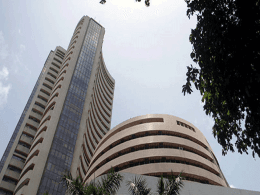The years-old trade of piling into emerging markets to capture higher returns afforded by faster growth may be losing its lustre, putting capital flows at risk as investors take a more nuanced approach to the asset class.
Typically, the path of economic growth in emerging markets has remained detached from developed markets - outperforming during periods of strong global growth such as the years before and just after the 2008 global financial crisis.
That growth differential has also helped suck in trillions of dollars of capital flows, including $311 billion in 2019.
But the coronavirus pandemic is testing that thesis. China's economic recovery has roared ahead of most developed countries, but also of developing markets such as South America which is still grappling with high numbers of virus cases.
And even as economies begin to get back to normal, trend growth - already on a downward trajectory before the pandemic - could be eroded further as global supply chains suffer potentially irreparable hits.
The Institute of International Finance said that while trade across emerging markets is starting to recover, limited social safety nets, healthcare capacity and less scope for aggressive macro policy easing meant in many ways they were facing tougher economic challenges than their developed peers.
Low interest rates and U.S. dollar weakness should be a push factor into emerging market debt and that has helped bring in fund inflows for the past 10 weeks, the longest streak since 2017. In the latest week through Sept. 9, inflows totalled $1.8 billion, according to EPFR Global.
But investors will still have to be on their toes.
"Given the uncertain and uneven growth recovery path, we think the differential will likely be pretty noisy in the near term," Ron Gray, emerging market strategist at Goldman Sachs, said in emailed comments to Reuters. "Over the longer term, we would point to the decrease in fiscal and monetary policy buffers as a headwind for EMs when needing to bounce back from future periods of stress."
The breakdown in the EM vs. DM differential is evident in emerging assets. Chinese stocks outperformed developed markets year-to-date, while other emerging markets trail even further behind.
In credit, high-yield emerging market sovereigns have widened relative to U.S. high-yield, perhaps due to the U.S. Federal Reserve support for domestic bonds, Goldman Sachs said in a research note.
Emerging markets now "sorely lacks a compelling impetus for investment", Societe Generale said this week, noting the tank was empty for the long bond trade as well as emerging currencies.
Analysts say all of this will translate into capital flows, which have been slow to rebound since the pandemic, being sluggish going forward.
Assuming emerging and developed markets grow in line with their potential rates of 2.8% and 1.4%, respectively, the former should post medium-term capital inflows of around 0.3% of GDP, JPMorgan forecast. That compares with the post financial crisis peak of 0.9% in 2011.
Diversification
While the pandemic has upended the traditional approach to emerging market investment in the short term, increasing intra-emerging market trade has already weakened the relationship with developed markets in recent years.
China's share in the rest of emerging markets' total exports has tripled to 12% over the past two decades, JPMorgan said. Yet a decline in trade between emerging markets outside China and the United States highlighted a diminished role for developed markets in developing economies' external trade.
China's trade linkages with the U.S. will likely be further strained by the ongoing trade spat between the two countries, Luis Oganes, JPMorgan's global head of emerging markets research, told Reuters.
"The ongoing decoupling in trade and technology means that there will probably be growing divergence between the business cycles of China and the U.S.," said Oganes.
"That's why we're saying that growth differentials between EM and DM countries may not be the biggest appeal factor for capital flows to EM going forward, but there's going to be a diversification benefit of investing in EM given its deepening links to China that should still keep capital flows coming."
Investors will increasingly have to be pickier, many predict, venturing beyond the popular equity, currency and bond indexes favoured by investors and the high-yield/investment grade split often used to manage allocations.
"The jobs of EM country analysts and EM investors will become more challenging in the years ahead since it is increasingly difficult to analyse EM as a single bloc and in order to capture the better opportunities we will all need to get into the individual EM country stories a lot more closely," said Oganes. Goldman Sachs sees more profit upside in emerging market companies over their developed peers, said Gray.
"We still see opportunity in EM over the longer run but investors will likely have to be more selective on inter-EM themes like regional or sectoral differences as opposed to an outright EM vs DM view," he said.







